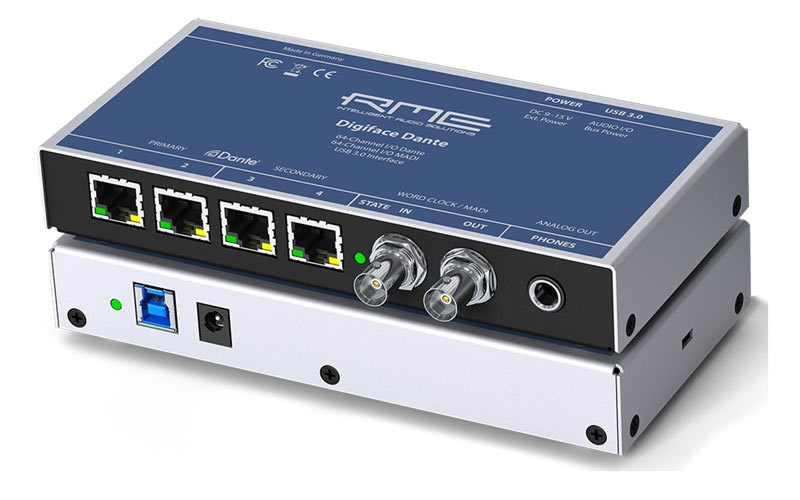RME Digiface Dante
The mobile audio interface enables the transmission of up to 64 Dante channels and 64 MADI channels via a single USB 3.0 connection. With the new Digiface Dante RME extends its Digiface series with a powerful Dante model for USB and standalone operation.
Mobile Dante solution
The Dante Audio-over-IP protocol was developed by the Australian company Audinate and enables uncompressed transmission of digital audio signals with low latency over long distances. To support the growing popularity and distribution of Dante-based solutions in the professional audio market even more flexibly, the compact Digiface Dante USB 3.0/Dante interface from RME adds an external option for fully mobile operation to the previously available internal Dante PCIe card. To power the Digiface Dante in the field, users can use both an external power supply and USB bus power.
Dante & MADI
With the integration of the MADI drivers (Mac/Windows) of the renowned RME MADIface series, Digiface Dante allows users to transfer up to 64 MADI channels via USB 3.0 in addition to up to 64 Dante channels. For this purpose, both BNC sockets for the word clock I/O can be switched to MADI I/O. The total of 128 Dante and MADI channels can be conveniently controlled via the included Dante control software and the DSP-based RME TotalMix FX mixer with its comprehensive routing and monitoring options. In this way, TotalMix FX allows users to create independent sub-mixes according to the number of available outputs.
The Digiface Dante has two banks of redundant network ports that can be used multifunctionally as inputs and outputs, as network switches and for redundant operation with primary and secondary networks in case of increased security requirements. In addition, the interface can also be used as a mobile 64-channel Dante/MADI converter if the USB computer connection is not in use.
In addition to the USB 3.0 port, Dante network ports, word clock I/O ports and power supply connector, the Digiface Dante also has a high-quality headphone monitor output that can be used as a line output to transmit an optional analog stereo mixdown.


